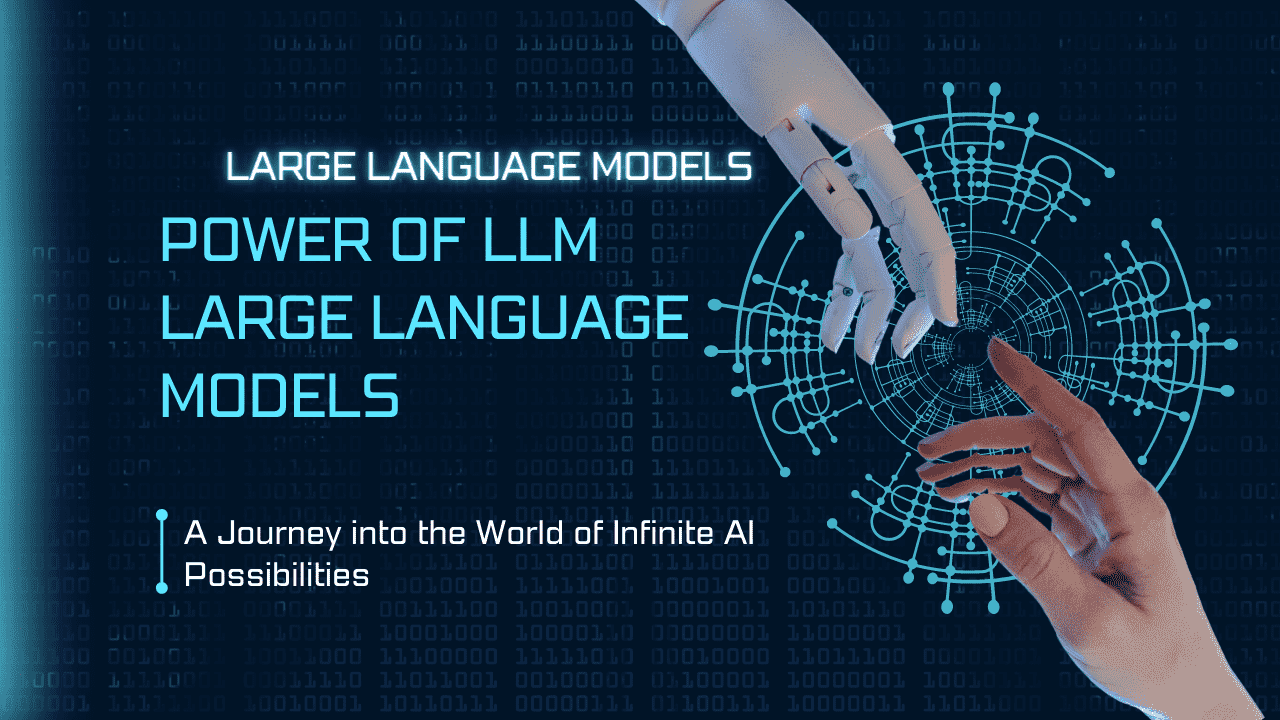Power of AI LLM: Large Language Models
Large language models redefine AI's landscape. From understanding architecture to ethical frontiers, explore their power, applications, and shaping influence on AI's evolution.

In the ever-evolving landscape of artificial intelligence, one technological marvel has taken center stage in recent years – AI Large Language Models. These models have transformed the way we interact with computers, pushing the boundaries of what machines can understand and create using human language. In this article, we embark on an exciting journey to explore the power and potential of large language models, delving into their inner workings, applications, ethical considerations, and the profound impact they're having on various industries.
The Birth of AI LLM: Large Language Models
The story of large language models begins with a quest for machines to understand and generate human-like text. From their beginnings, these models have rapidly evolved, culminating in the creation of behemoths like GPT-3.5 by OpenAI, which boasts an astonishing number of parameters. These language models are trained on massive datasets, enabling them to learn grammar, context, and nuances of human language with unparalleled precision.
AI large language models have revolutionized content creation. They can craft articles, essays, and even stories that closely mimic human writing styles. This capability is a game-changer for marketers, bloggers, and writers who can now automate content generation, saving time and resources while maintaining quality.
What sets AI large language models apart is their ability to understand context and intent. They can decipher the meaning behind words, considering the broader conversation. This skill makes them invaluable for tasks like sentiment analysis, social media monitoring, and customer support. By accurately gauging user intent, businesses can enhance their engagement strategies.
Conversational AI powered by large language models has become a staple in our digital lives. Virtual assistants like Siri, Alexa, and Google Assistant utilize these models to comprehend and respond to user queries naturally. With further advancements, we're witnessing the emergence of virtual companions that can simulate empathetic conversations, offering support and companionship to individuals.
The Ethical Conundrum: Navigating Bias and Responsibility
The power of AI language models comes with a responsibility to address biases and ethical concerns. These models can inadvertently perpetuate biases present in their training data, leading to unfair or discriminatory outcomes. Developers and researchers are actively working on techniques to mitigate these issues and promote fairness in AI systems.
The impact of AI language models extends across industries. In healthcare, they assist in medical research and diagnosis. In finance, they aid in risk assessment and fraud detection. In education, they offer personalized learning experiences. From legal analysis to creative arts, these models are reshaping how professionals work and innovate.
The journey of AI language models is far from over. As we stand at the brink of possibilities, researchers are exploring avenues to make these models even more adept at understanding specialized domains, languages, and complex human emotions. However, challenges like resource consumption, model interpretability, and data privacy must also be addressed for responsible AI development.
Conclusion: The Language Model Revolution
AI large language models have ushered in a language model revolution, changing the way we communicate with machines and transforming industries across the board. The journey from their inception to their current state has been a testament to human ingenuity and the relentless pursuit of pushing technological boundaries. As we navigate this landscape, it's imperative that we harness their power responsibly, ensuring a future where AI is a force for good, enhancing human potential and enriching our lives.
A powerful LLM generated majority of the text in this article. The author reviewed, edited, and revised the draft.